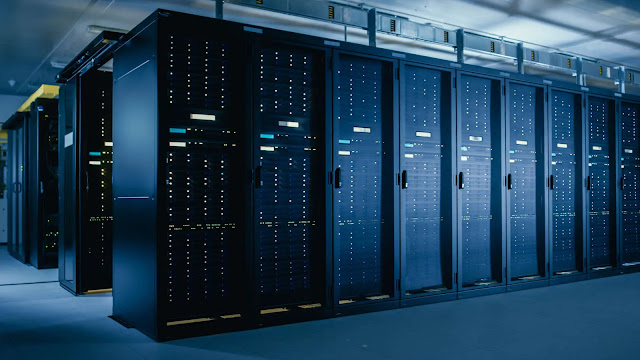Introduction
Alteryx Server is a powerful platform designed to enable organizations to deploy, manage, and scale analytic workflows in a collaborative, secure, and governed environment. It serves as a cornerstone for companies aiming to operationalize analytics, offering robust capabilities for workflow automation, data management, and advanced analytics. This guide provides a comprehensive overview of Alteryx Server’s components, navigational tips, and structural insights to help users maximize its potential.
Key Components of Alteryx Server
- Gallery
- The Gallery is the user interface of the Alteryx Server that allows users to publish, share, and schedule workflows. It acts as a central hub for collaboration and workflow execution.
- Controller
- The Controller is responsible for managing the execution of workflows. It schedules jobs, distributes them to worker nodes, and maintains logs for auditing and monitoring purposes.
- Workers
- Worker nodes are where workflows are executed. The Controller distributes workflows to these nodes to perform the actual data processing tasks.
- Database
- Alteryx Server includes a MongoDB instance that stores application data, including workflow history, user information, and configuration settings.
Architectural Structure
- Single-Node vs. Multi-Node Setup
- Single-Node Setup: Suitable for small teams or development purposes, where all server components are installed on one machine.
- Multi-Node Setup: Recommended for larger deployments, offering flexibility and scalability by distributing components across multiple machines.
- High Availability and Scalability
- Allows for the addition of multiple worker nodes to meet increasing demand and ensures high availability with failover capabilities.
Navigational Guide
- Logging In and User Access
- Access the Gallery interface via a web browser.
- Users must have credentials provided by the system administrator to log in and access different features based on their roles.
- Navigating the Gallery
- Home Page: Displays featured workflows, apps, and notifications.
- Districts and Collections: Organize and categorize workflows for easy access.
- Search Bar: Quickly locate workflows by name or keywords.
- Managing Workflows
- Publishing: Users can publish workflows from Alteryx Designer directly to the server.
- Scheduling: Schedule workflows to run at specific times or trigger them based on events.
- Version Control: Manage different versions of workflows with built-in versioning functionality.
- User Roles and Permissions
- Define roles such as Admin, Artisan, and Viewer, each with different levels of access and capabilities.
- Manage permissions to control who can view, edit, or execute workflows.
Best Practices for Using Alteryx Server
- Security and Governance
- Implement role-based access control to secure data and workflows.
- Regularly audit user activities and workflow execution logs.
- Performance Optimization
- Regularly monitor server performance and add worker nodes as necessary.
- Optimize workflows to minimize resource usage and execution time.
- Maintenance and Updates
- Regularly update the Alteryx Server to leverage new features and security updates.
- Backup MongoDB instances to prevent data loss.
How does Alteryx Server support collaborative analytics?
Alteryx Server supports collaborative analytics through several key features and functionalities that enable teams to work together efficiently while ensuring data governance and security. Here’s how it facilitates collaboration:
- Centralized Workflow Repository:
- The Alteryx Server Gallery serves as a centralized hub where users can publish, store, and access workflows. This centralized repository ensures that all team members have access to the latest versions of workflows and can collaborate on data analytic processes without duplication or version conflicts.
- Role-Based Access and Permissions:
- Alteryx Server offers role-based access control, allowing organizations to define and manage user roles such as Admin, Artisan, and Viewer. These roles help ensure that users have the appropriate permissions to access, modify, or execute workflows, thereby maintaining a secure and governed environment for collaboration.
- Version Control:
- Built-in version control features allow users to manage and track changes to workflows over time. This enables team members to work collaboratively on developing workflows, revert to previous versions if needed, and maintain a historical record of changes.
- Shared Workspaces (Collections and Districts):
- Alteryx Server allows users to create collections and districts, which act as shared workspaces for organizing workflows. These features enable teams to categorize and share workflows easily, fostering a collaborative environment where team members can access and contribute to shared analytics projects.
- Scheduling and Automation:
- Users can schedule workflows to run automatically at specified times or trigger them based on events. This automation capability ensures that collaborative workflows are executed consistently and efficiently, freeing up time for team members to focus on more strategic tasks.
- Collaboration through Apps:
- Alteryx Server enables the creation and sharing of analytic apps, which are user-friendly interfaces for running workflows. These apps can be shared with non-technical users or stakeholders, allowing them to interact with and gain insights from data without needing to understand the underlying workflow.
- Collaborative Feedback and Iteration:
- Users can provide feedback on workflows directly within the Gallery interface, facilitating iterative improvements and collaborative development. This feedback loop helps teams refine and enhance their analytic processes over time.
By leveraging these features, Alteryx Server provides a collaborative platform that allows data teams to work together efficiently while ensuring data governance, security, and accuracy in their analytics workflows.
What are Alteryx Server’s compliance features?
Alteryx Server offers several compliance-focused features to help organizations meet regulatory requirements and industry standards. Here are the key compliance capabilities of Alteryx Server:
- FIPS 140-2 Compliance (Alteryx Server-FIPS):
- Alteryx Server-FIPS is a version of the Alteryx Server that is designed to be FIPS 140-2 compliant, a security standard developed by the U.S. National Institute of Standards and Technology (NIST). This version provides enhanced security and encryption capabilities for organizations that require FIPS compliance, such as government agencies and contractors.
- Data Encryption:
- Alteryx Server supports encryption of data at rest and in transit, ensuring that sensitive information is protected from unauthorized access. This includes encryption of workflow files, configuration data, and communication between the server and client applications.
- Access Control and Authentication:
- The server’s role-based access control and authentication features allow organizations to manage user permissions and ensure that only authorized individuals can access and interact with data and workflows. This helps maintain compliance with data privacy regulations, such as the General Data Protection Regulation (GDPR).
- Audit Logging and Reporting:
- Alteryx Server provides comprehensive audit logging, which records user activities, workflow executions, and other events. This audit trail enables organizations to monitor and demonstrate compliance with regulatory requirements, such as data protection laws and industry standards .
- Integration with Data Governance Platforms:
- Alteryx Server can be integrated with external data governance and compliance platforms, allowing organizations to leverage additional tools and processes to manage data quality, privacy, and regulatory adherence .
- Workflow Validation and Best Practices:
- Alteryx Server can be configured to include automated checks and validations for workflows, ensuring that they adhere to organizational compliance standards and best practices. This helps mitigate the risk of errors, data breaches, and regulatory violations.
- Secure Data Handling and Sharing:
- The server’s data handling and sharing capabilities, such as the use of Studios and Collections, enable organizations to control and secure the flow of data within analytical processes, aligning with data privacy regulations like GDPR.
By leveraging these compliance-focused features, Alteryx Server helps organizations maintain data security, privacy, and regulatory adherence throughout their analytical workflows and data management processes.
Conclusion
Alteryx Server is a comprehensive solution for managing analytic workflows in a collaborative and secure environment. By understanding and navigating its various components and features, organizations can significantly enhance their ability to operationalize analytics and drive data-driven decision-making. Proper architecture setup, along with adherence to best practices for security, performance, and maintenance, will ensure a robust and scalable analytics infrastructure.



